 Sámegillii
Sámegillii  På norsk
På norsk
Articles about Sami school history
Part 25 - printed in Ávvir 28.01.2012
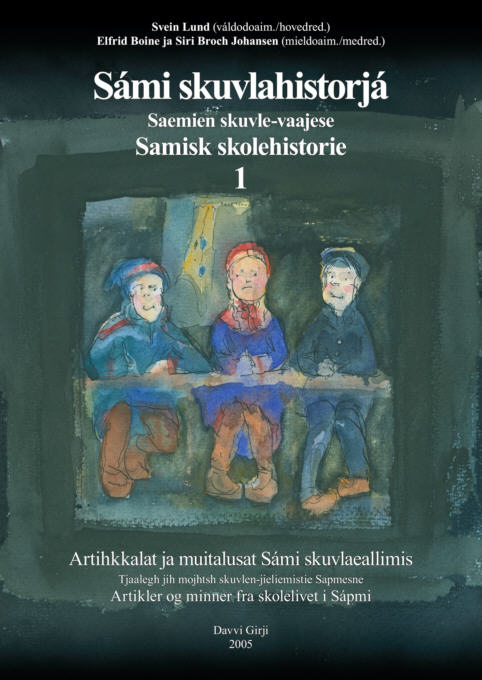 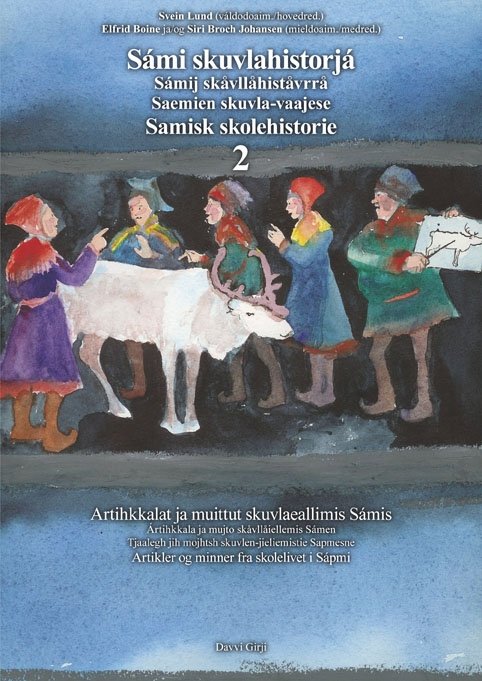 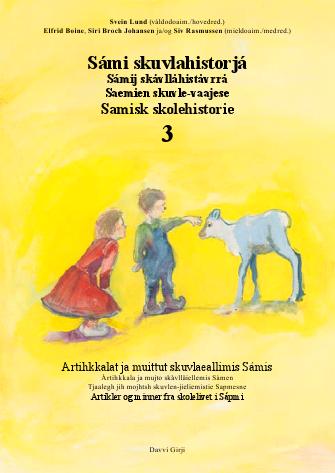 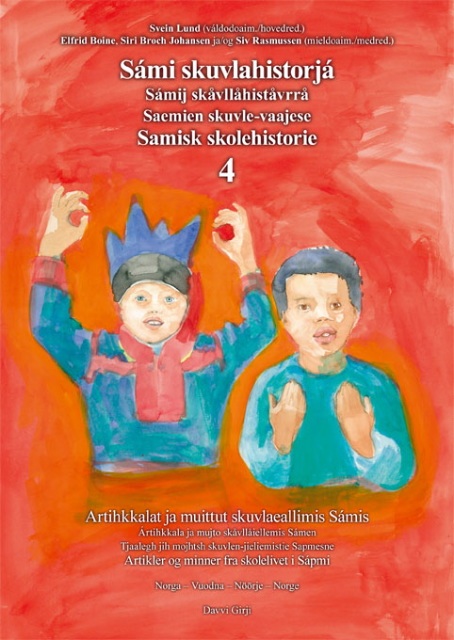 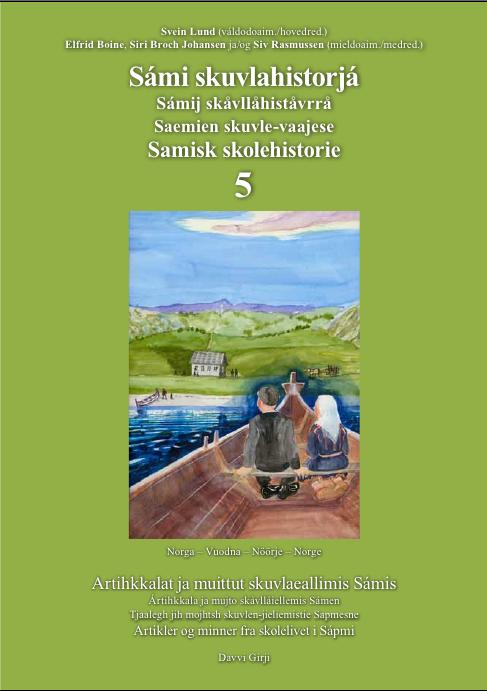
Do you know Sami school history?Sámi skuvlahistorjá / Samisk skolehistorie (Sami School History) is a series of books published by the publishing house Davvi Girji. In about 200 articles in 5 volumes there is told about the experiences of Sami children in Norwegian schools, and about the changes in the educational politics of the Norwegian authorities towards the Sami population. The books are published with parallell text in Sami and Norwegian language.In this web site some of the articles of the first book are also published in English. It would be too much to translate it all, so to make this history available to a greater public, we are translating a series of newspaper articles, which sorted by topics make a summary of stories in the books. So far there are 28 articles published in Sami language by the Sami newspapers Min Áigi and Ávvir. They are also published here in Norwegian and the English version will be published gradually as they are translated. These articles are edited by the main editor, Svein Lund. Besides him the editing board of the book series consist of Elfrid Boine, Siri Broch Johansen and Siv Rasmussen. |
In the beginning the teachers continued to teach as before, but gradually the Nazis interfered more and more with the school. The teachers were under strong pressure to teach according to the Nazi ideology, but it was also opposed strongly. It was a lot of talk about introducing completely new curriculums and educational books, but the new curriculums were never made. A few new educational books were made, marked by the ideology of the NS (the Norwegian Nazi party), while other books were «authorized for use in school».
In 1942 Quisling's government decided that all teachers should take part in «Norsk Lærersamband» (Norwegian union of teachers), which was completely controlled by the NS. If one was not a member of the union one could loose the position as teacher.
The union of teachers was also organized in Finnmark. In line with the commander principle the national leader Orvar Sæther in a letter of 21.02.42 appoints teacher Lars Augestad, Vadsø, to county leader of the union of teachers in Finnmark. The national leader asks Lars Augestad to send suggestions for district leaders. In the letter it is stated that «These should preferably be NS, if you could find someone who is suitable for the task. Otherwise persons with sympathetic attitude towards our ideology who are willing to an honest cooperation for the welfare of the profession and the people following the new guidelines should be used.»
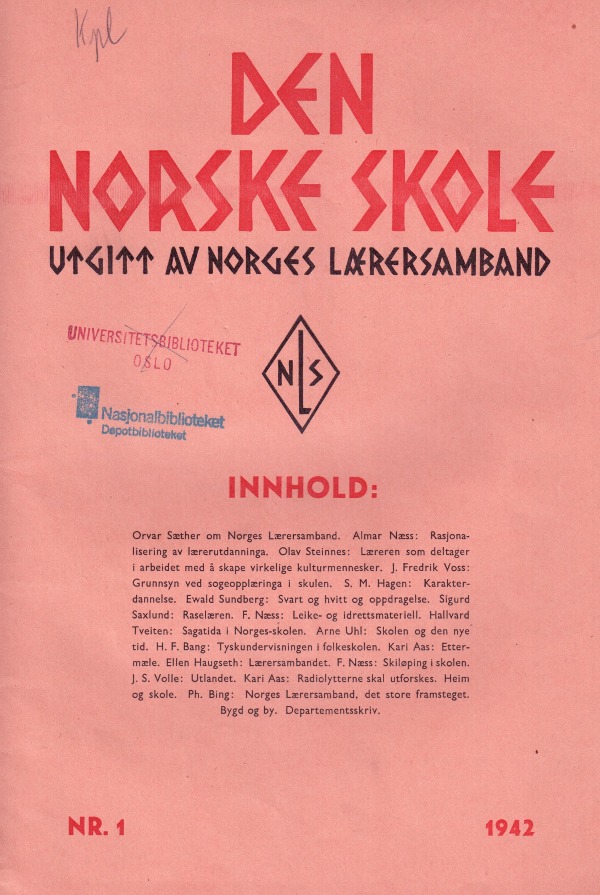 |
Den norske skole (The Norwegian school) was body of Norges Lærersamband (Norwegian Union of teachers). It was sent to all teachers, but many did not accept to be considered as members of NLS and followed the orders of the home front to return the magazine. On some of the copies we have found of the magazine in libraries, someone has crossed out the field of the addressee and written: «Return. Not subscriber». |
Augestad sent proposals for district leaders the 08.04.42, and the week after he got the notification that these had been appointed. 15.04.42 Augestad wrote a letter to Toralv Tveiten, Kirkenes, who was appointed district leader of Eastern-Finnmark. In the the letter he refers to the appointment of himself as the county leader and admits rather openly how difficult it was to work for NS/Union of teachers and how small the support among the people was:
«I would have wished that someone more capable than me could have been appointed. But as you know, there are not many teachers in this district who have entered the NS, most of them are fighting the new, and when there are so few to choose among, I feel it as a duty to help in »shaping an obstinate people« with the best of my abilities. .... It is also a quite «ungrateful position» to us now in the beginning: many oblique glanses, collegiate spirit falling apart, enemies etc. But we have to risk this, because it must be a part of the final struggle we need to get through to get back on course again.»
In the same letter he shows concretely the consequences of the fact that only teachers who were members of the Union of teachers were allowed to teach:
«To my enquiry per telegram to the Ministry of Church as to whether the schools could be started again after the easter if the teachers were willing, the reply was: the schools can only continue with teachers who are members of the Union of teachers.
Later some people here have tried to make of indirect means to avoid me to get the schools started, but they have not succeeded. One schoolmistress had started with the pupils from the lower secondary school in her private home. But today I was able to stop the school, and the pupils had to go home.
It is not pleasant to have to act in this way and fall out with colleagues, but I suppose it is must be done.
And now you should, to the best of your abilities, keep an open eye, just like me, to see where «smoke arise», look after, and as far as possible inspect the districts (East-Finnmark) to see if there is «something in the wind».»
19.12.1942 Augestad again wrote a letter to the district leader Tveiten, where he describes some of the resistance among the teachers in different places in Finnmark.
«... Talked to teacher Lillevik at the meeting of the trustees here. There were many hard-boiled ones in Mehamn, he said. He has also heard ( from Kautokeino, e.g.) that several are refusing to write on the filing cards. - No, we are not done yet. All means are used in the battle. ... The director of schools told that the mayor in Tana wanted to get all teachers away and remove some from office, so there it seems to be compact.
... Heil og Sæl (Healthy and Happy)
Lars Augestad»
...
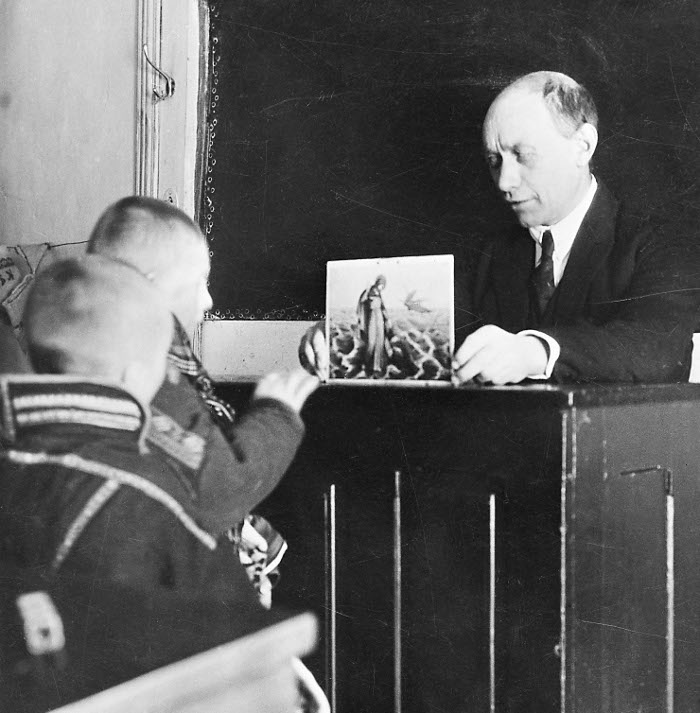 |
Lyder Aarseth came to Kautokeino as teacher in 1913 and became Director of schools in Finnmark in 1933. He was removed from office by the Nazi rule in 1943 and appointed again as Director of schools after the Liberation. (Photo: Tromsø museum) |
28.11.42. Director of schools Kvammen wrote to NS' squad leaders and trustees in Finnmark:
The ministry wishes to have an overview to wether there are disloyal teachers who should be dismissed, suspended or moved to other positions in accordance to the law of 16/4 1942 jfr. Reichskommissars ordinance of 4/10 1940. I would therefore like to ask you to investigate in your municipality as discreetly as possible if there are disloyal teachers who should be dismissed, suspended or moved. ...
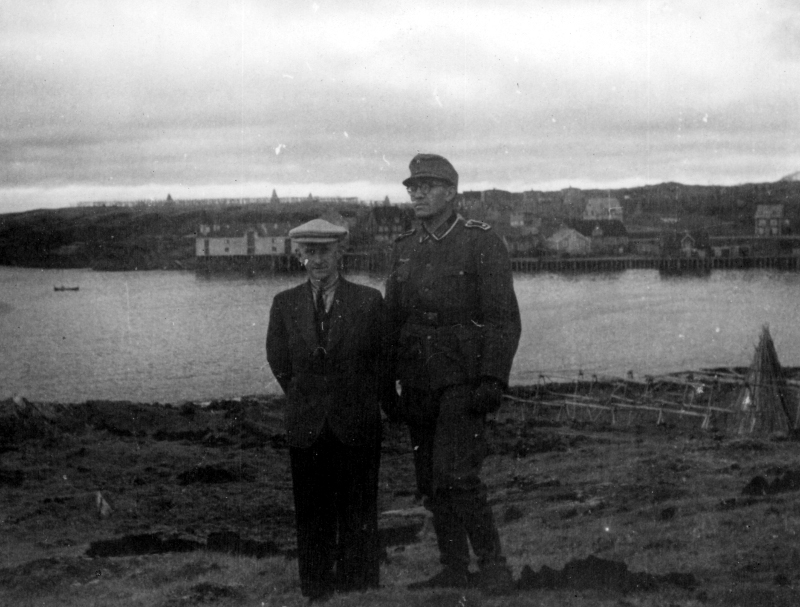 |
Bjarne Lillevik with the German officer Wilhelm Brüggemann, Mehamn September 1942. (Photo: Wilhelm Brüggemann, archive Rune Rautio) |
In Finnmark Bjarne Lillevik, who the Nazi government had appointed as director of schools was probably the one who got the most severe punishment. He was sentenced to forced labour for five years, loss of rights for10 years and he was sentenced to loss of his teaching position with no time limit. What he had earned from being director of schools was confiscated.
05.05.47 Finnmark director of school's position developed a «List of elementary school teachers who were NS or have demonstrated a particularly bad national attitude». There were 17 names on that list, but with time the double number of teachers would be comprised in the inquiry. ...(SSH5)
I was supposed to start school in 1941, but at the time the conditions in school were very turbulent. The Germans had taken the dormitories, and they only let the children live there for periods of time. Which meant that for us who needed to stay in the dormitory we did not have much time in school. The dormitory burned in 1944 and the school was moved to the District Sheriff's farm, to the assembly house. That is where I started school in spring 1944. The school lasted for six weeks at that time. The teacher was Norwegian speaking, Madsen. I did not understand anything. Supposedly he knew Sami, but he was not allowed to speak Sami in school. That is how the policy was back then, the Sami language was supposed to be exterminated.
Madsen had a radio, and some times we were allowed to listen to it. It was very strange. I had never seen or heard a radio before. I had to examine it properly, because I wanted to see where the person who was speaking was. Normal people were not allowed to keep a radio during the war, only those who were Nazis. And Madsen was a Nazi. It was something everybody knew, although we did not dare to speak much about it. In total it was about 4–5 people in Kautokeino who had a radio during the war.
Then in autumn the evacuation started, and there was no more school. In Ávževuopmi they did not burn the houses, but it was German soldiers there to keep a guard. We had to escape to the Finnish side of the boarder, to Bievrrašjávri, which is just across the boarder. It was a few hunter's cabins there where we lived until we could return home in the late winter 1945. (SSH5)
Here you find all the articles in the series:
28.09.2007 Why Sami school history?
05.10.2007 Boundless ignorance
12.10.2007 Southerner-teachers encounter the Sami language
19.10.2007 The start of Sami beginner instruction
26.10.2007 The start of education in reindeer-herding
02.11.2007 From Sami to Norwegian vocational training
16.11.2007 Struggle for Sami gymnasium
28.11.2007 School experiences of Norwegian speaking Samis
14.12.2007 Resistence against Sami language and culture
25.01.2008 A strange world
23.05.2009 On Sami teachers
30.05.2009 Life in boarding school
06.06.2009 Sami pupils were bullied
13.06.2009 Sami content in the teaching
20.06.2009 Pupil as interpreter
04.07.2009 How the children quit speaking Sami
10.09.2010 God does not understand Sami
08.10.2010 The point of view of the Norwegianizers
13.10.2010 Men of the church defending the Sami language
02.12.2010 Sami teachers in old times
09.12.2010 Boarding school life in old times
18.12.2010 Sami pupils in special schools
14.01.2012 The parents' struggle for Sami education
21.01.2012 Reluctance and absence
28.01.2012 The school during the war
04.02.2012 Reconstruction and barrack schools
11.02.2012 Curriculums - for Norwegianization and for Sami school
18.02.2012 The great struggle of the curriculum
Sami school history 1
Sami school history 2
Sami school history 3
Sami school history 4
Sami school history 5
Sami school history - main page